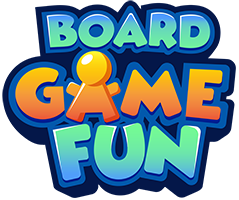How to Play Spades
Do you love a good card game that blends strategy and teamwork but aren’t sure where to start? Spades is a classic choice that brings together skill, strategy, and a dash of luck. It’s perfect for busy adults looking for a quick, engaging activity with friends or family. Whether you want a casual round with minimal fuss or are aiming to become a serious Spades player, this guide will get you there—no matter how tight your schedule or budget.
Brief Game Overview
- Players: 4 (in teams of two)
- Objective: Win the number of “tricks” (rounds of play) you bid.
- Key Twist: Spades is always the trump suit, beating all other suits.
- Why It’s Great: Strategy, teamwork, and a healthy dose of anticipation. Plus, it’s simple to learn once you see the flow.
Getting Started – What You’ll Need
Essential Materials
-
Standard 52-Card Deck
Make sure to remove any jokers. -
Four Players
Teams are formed in pairs, with partners seated across from each other. -
A Flat Surface
A dining table or coffee table works just fine. -
Budget Considerations
- Already have a deck of cards? Great!
- Don’t have one? You can find inexpensive decks at most stores.
- Prefer digital? Free Spades apps are available online if you’d rather practice or play virtually.
Budget Considerations
No need to spend much! If you don’t already own a deck of cards, you can find affordable options at most stores. For a digital option, free Spades apps are also available to download.
Step-by-Step Instructions on How to Play the Game
Setup
- Form Teams: Seat players so that partners are facing each other.
- Deal the Cards: Each player receives 13 cards (the entire deck is dealt out).
- Organize Your Hand: Arrange by suit (hearts, diamonds, clubs, spades) or group them by high/low cards—whatever helps you plan your bids and strategy.
Gameplay
Understanding the Goal
- Each round is called a “trick.”
- Your team aims to collectively win as many tricks as you bid at the start of each hand.
Bidding
- Starting with the player to the dealer’s left, each player declares how many tricks they believe they can take.
- Your team’s bid is the sum of both players’ bids.
- There’s no requirement to outbid other players, but estimate carefully—your score depends on meeting that bid.
Playing Tricks
- Leading a Card: The player to the left of the dealer starts by leading any suit except spades (unless spades are already “broken”).
- Following Suit: Each player must follow the suit led if they can. If you don’t have it, you can play any card—including a spade.
- Breaking Spades: Spades become playable as trump only after a player who cannot follow suit decides to use a spade. From that point on, spades can be led in subsequent tricks.
- Winning the Trick: Whoever plays the highest card in the led suit (or highest spade, if spades have been played) wins that trick.

Scoring & Winning
-
Meeting Your Bid: If your team exactly meets or exceeds its bid:
- You score 10 points per trick you bid.
- Any extra tricks count as “bags.” Each bag is worth +1 point, but accumulating 10 bags across rounds triggers a 100-point penalty.
-
Failing to Meet the Bid:
- If your team wins fewer tricks than bid, you lose points equal to your bid amount.
-
Goal:
- Teams typically play until they reach 500 points (or another agreed-upon total).
Secrets to Win Spades
- Count Your Spades: Since they’re trump, they’re valuable. Plan to use them strategically.
- Communicate Without Words: Partners can’t openly discuss their hands mid-game, so bidding accurately is crucial.
- Avoid “Overbidding”: Conservative bids can help you avoid big penalties.
- Practice Makes Perfect: If you’re brand new or feel slow in live games, try free online Spades simulators to speed up your decision-making.
Variations & House Rules
- Solo Play: If you can’t find four players, there are versions for three or even two players, though the team-based version is the most common.
- Different Scoring Rules: Some groups have custom penalties or bag rules—feel free to adapt if everyone agrees before starting.
- Nil Bids: In advanced play, a player can bid “0” (nil) and aims to win no tricks, which can net a big bonus if successful.
Troubleshooting
- Misunderstanding Bids: Keep a notepad handy to track bids and ensure clear communication between partners.
- Struggling with Trump Rules: Remember, spades can only be played after being broken. Clarify this rule before starting.
- Slow Gameplay: New players can practice using online Spades simulators to speed up decision-making.
Frequently Asked Questions
-
How many players are required for Spades?
- Four is standard, but variations exist for other numbers.
-
What does it mean to “break” spades?
- Spades are “broken” when a player can’t follow suit and plays a spade instead. After that, they can be led.
-
Can you play without a partner?
- Yes! Several solo variations let everyone compete individually.
-
How do penalties work?
- You lose points equal to your bid if you don’t meet it. Bags (extra tricks) add up, and 10 bags cause a 100-point deduction.
The Final Shuffle
Spades is a fantastic balance of teamwork, strategy, and fun. While it might feel complex at first—especially if you’re new to trick-taking games—it quickly becomes second nature with a little practice. Before you know it, you’ll be confidently calling your bids, trumping tricks, and keeping track of scores like a pro.
Ready to try your hand at another card game? Consider exploring Bridge or Hearts next. Share your Spades journey with friends and subscribe for more easy-to-follow guides on games and activities that make life more enjoyable.
Now, gather your team, shuffle that deck, and enjoy the thrill of Spades!


